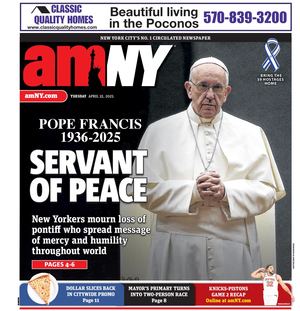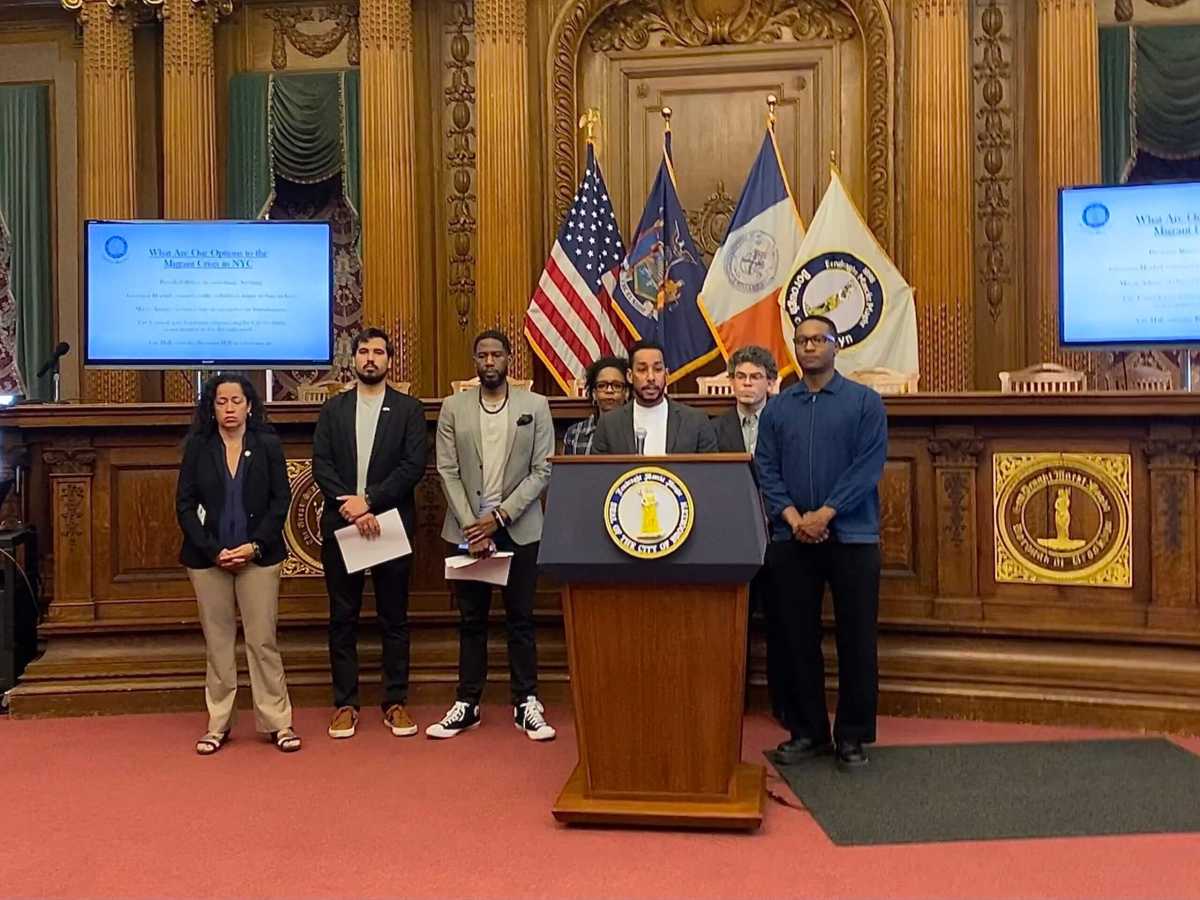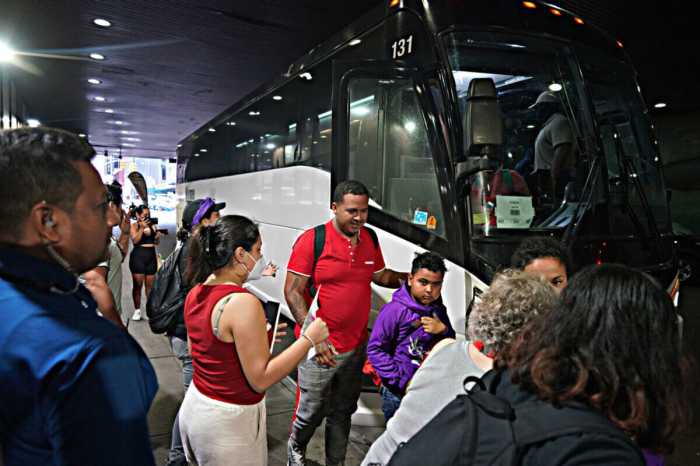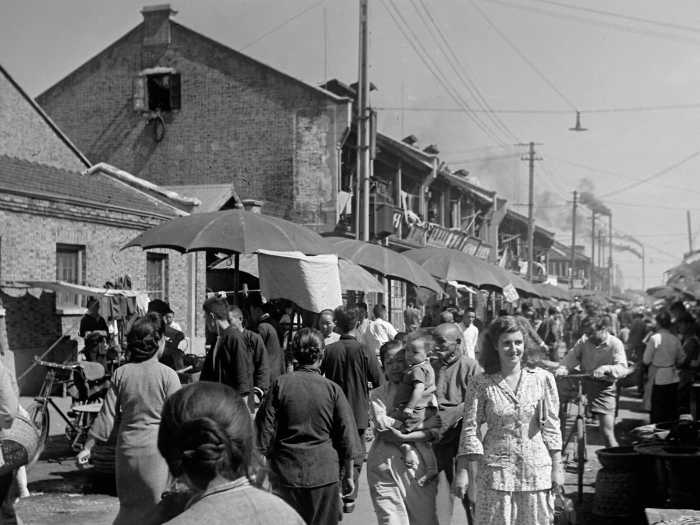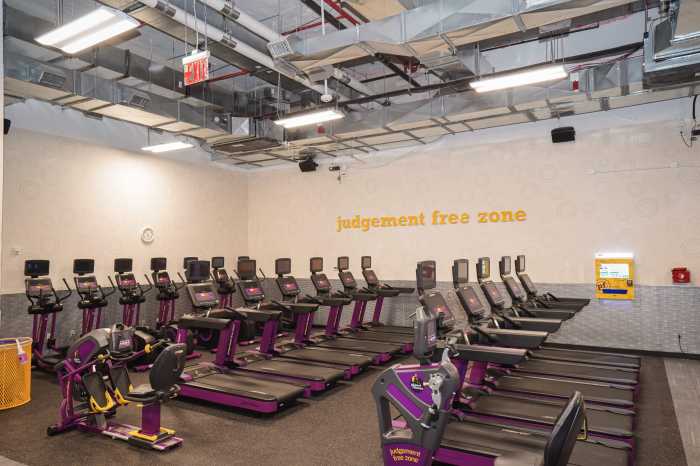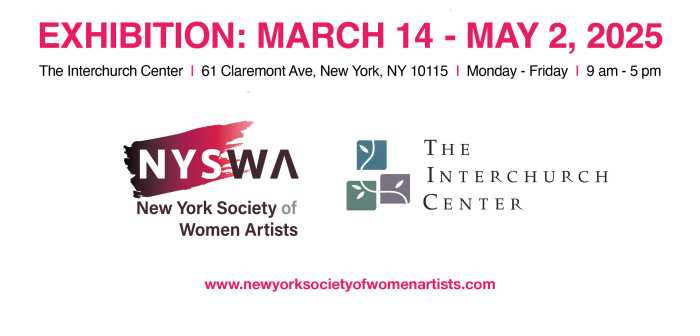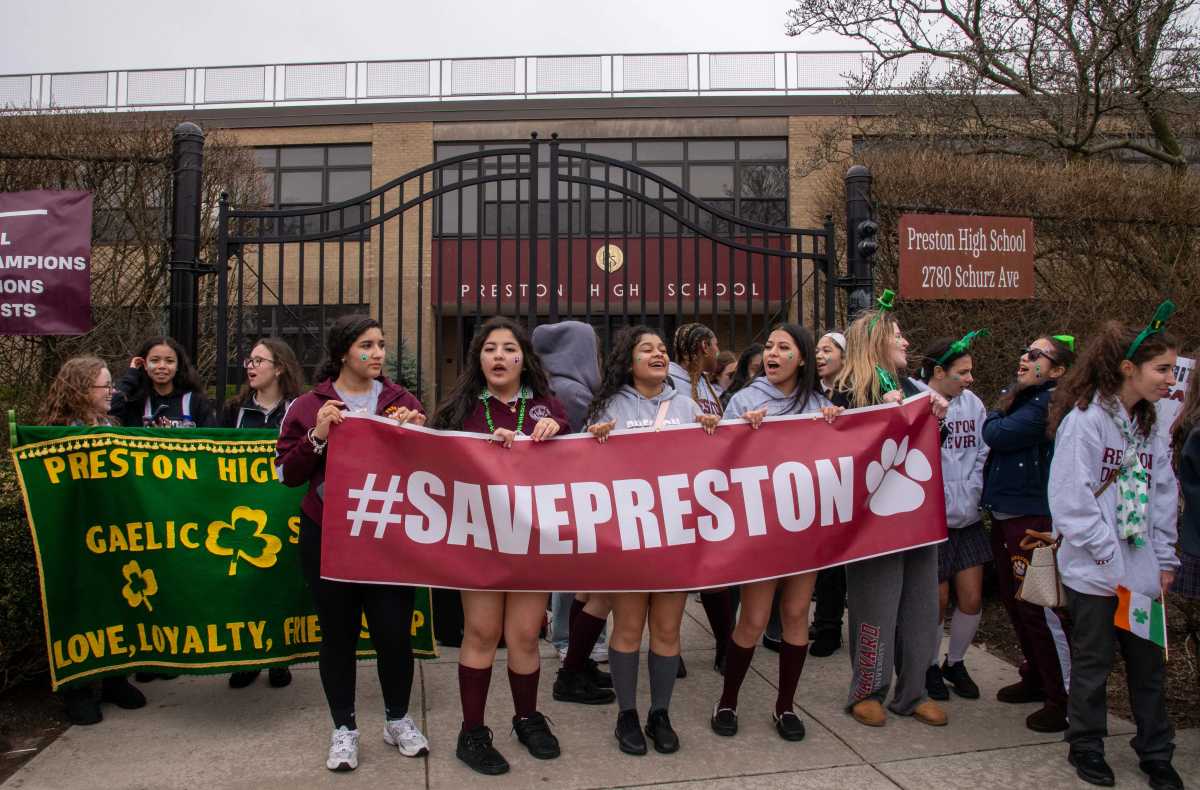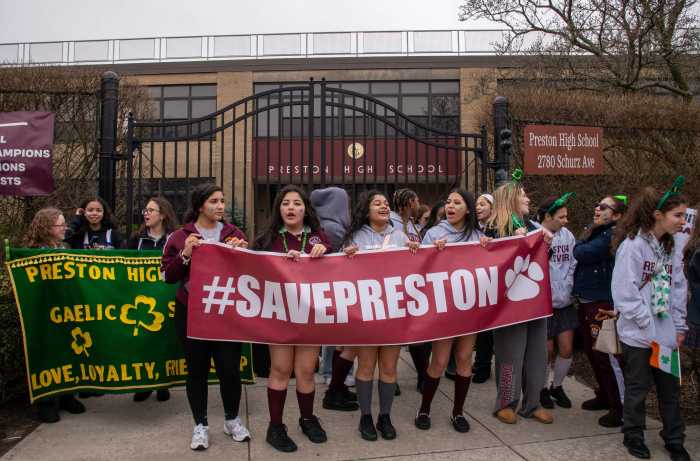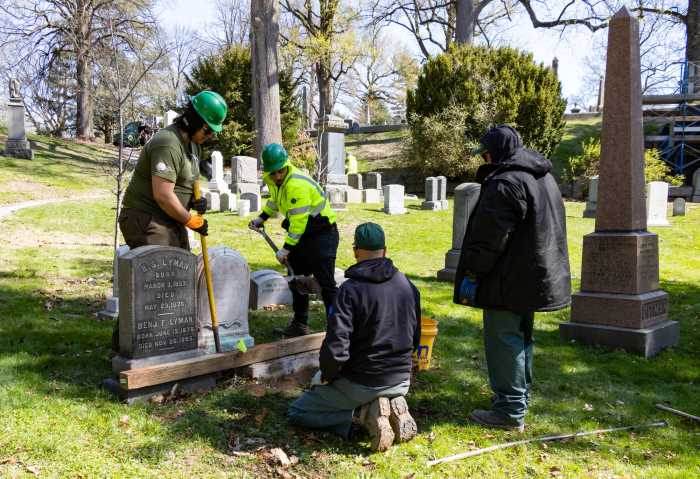Brooklyn Borough President Antonio Reynoso is calling on city and state officials to make available tens of thousands of vacant market-rate apartments to house homeless New Yorkers — thereby making room in shelters to simultaneously address the migrant and homelessness crisis.
Reynoso, at a press conference at Brooklyn Borough Hall Wednesday, urged Governor Kathy Hochul, Mayor Eric Adams and the New York City Council to make this proposal a reality, as well two others he put forward.
The borough president pointed to three solutions that could transition migrants and unhoused New Yorkers into housing. The city is currently overwhelmed with unhoused individuals, with more than 41,000 migrants currently in the city’s care, contributing to the 80,000 individuals in city-operated shelters. The majority in those shelters are families with children.
Reynoso said the temporary shelters at schools are “not ideal” and “not what we want at all.” He referred to his two young sons, and as a father, wanting them to have access to every educational and recreational resource available to them. He said creative solutions are now needed to support the city’s most vulnerable people and its newest arrivals.
“The people are not the crisis — homelessness and our defunded city services are the crisis,” Reynoso said. “I call on the City Council, Mayor Adams, and Governor Hochul to take legal steps toward empowering our government to get those who have been stuck in our shelter system the longest into the tens of thousands of apartments that sit vacant and ensuring the communities outside of New York City contribute to the greater good as well.”
Reynoso first urged the New York City Council to pass legislation that would direct Mayor Adams to “use government power to solve the homelessness crisis through the private sector.”
This legislation would categorize the migrants as an emergency under administrative code, and direct Adams to lease market apartments for housing homeless families and those who have been in city shelters for the longest periods of time, therefore “creating space in our shelter for new arrivals.”
Landlords would be required to rent apartments at market rate, and forbid landlords from refusing to rent apartments during a period of time Reynoso called “an emergency crisis.”
Reynoso highlighted a staggering amount of roughly 89,000 rent-stabilized apartments and tens of thousands of market-rate apartments that are all possibly vacant, unleased, or unlisted. He said that the roughly 41,400 shelter beds could then be used for migrants and asylum seekers.
“The wealth of space and housing that exists this city is unimaginable,” Reynoso said at the press conference. “Yet, these apartments sit utterly and totally empty. It’s unconscionable.”
The borough president is also pushing Adams to issue a new emergency executive order declaring a public emergency over homelessness, which he stated has already been in place before more than 65,000 migrants began arriving in New York City since last spring.
Reynoso also urged Adams to seek state assistance from Governor Hochul under a state executive law mandating state support — in the form of facilities and personnel — for a “local state of emergency.”
The proposal could have the potential to “compel municipal governments” near New York City to collaborate in providing temporary shelters and contribute more affordable housing in the long term, according to Reynoso.
The borough president referenced Rockland County, which lies roughly 36 miles north of New York City, as one such government that would be forced to reverse its recent block on motels and hotels for migrant shelter use.
The borough president was joined at Brooklyn Borough Hall by Public Advocate Jumanne Williams, Council Member Alexa Avilés, Council Member Rita Joseph, Council Member Chi Ossé, Council Member Lincoln Restler, and representatives of State Senator Andrew Gounardes, State Senator Julia Salazar, and Assembly Member Phara Souffrant Forrest.
Williams said that while he understands the fear and concern many New Yorkers and families are feeling, the public advocate urged New Yorkers to view the migrants as people who desperately need resources and assistance.
“It’s easy to say that you’re a humanitarian. It’s easy to say that you’re a sanctuary city,” Williams said. “It’s easy to say these things until you’re in crisis.”
The public advocate said he understood the current migrant crisis is “unsafe and unsustainable” but cautioned people to avoid framing the situation as a “us versus them” situation. He acknowledged that there are still New Yorkers who have been fighting to get assistance for themselves.
“It is very important that we don’t blame people who need assistance,” Williams said. “The answer is and has always been trying to address our deeply problematic affordable housing crisis.”
Reynoso expressed his disappointment at the federal government failing to provide substantial financial support in emergency aid for New York City as tens of thousands of migrants are brought in. The city’s Office of Emergency Management had applied for $350 million from the Federal Emergency Management Agency, and received just $30.5 million in May, much to Adams’ chagrin.
“Just because we here in Brooklyn can’t do everything, doesn’t mean we can’t do something,” Reynoso said. “This is about our city and state showing up — along with every New Yorker and every neighborhood — to put forward creative solutions that help us get people into stable, dignified housing and protect the rights and dignity of people arriving here from the border.”
In response to a protest organized against the planned migrant housing, Reynoso conducted a site visit on Tuesday at P.S. 17 in Williamsburg, where 70 migrants are to be housed.
Said Reynoso in a statement: “One of the reasons I went there was because I was disappointed that I saw parents and children from my neighborhood — the neighborhood my immigrant Dominican parents built our home in when they first came here seeking a better life — fill the sidewalk in protest against those who need shelter there.”
As of Wednesday afternoon, P.S. 188 in Coney Island, which falls in Council Member Justin Brannan (D-43)’s district, is no longer being used as a temporary shelter, the Councilmember announced in a tweet which he ended stating: “Our schools should not be used for this purpose.” Council Member Ari Kagan stated that the shelter operations would be relocated to another site in Manhattan in a tweet Wednesday afternoon.
The five announced schools in Brooklyn placing migrants in its gyms are P.S. 189 in Crown Heights, P.S. 172 in Sunset Park, and P.S. 17, P.S. 18, and M.S. 577, all of which are in Williamsburg.
Jennifer Gutiérrez (D-34), joined five other North Brooklyn councilmembers in a joint statement released on May 16: “As North Brooklyn elected officials, we were notified alongside our school leaders about the administration’s plans to use three standalone school gym facilities in our district to shelter migrants, a direct result of the Mayor’s Executive Order 402, which suspends Right to Shelter laws. Elected officials are not consulted on these emergency shelters.”
The council members called the choice of using school facilities to house migrants as “far from ideal,” and that they have “expressed concerns about the equitable distribution of shelters in our district.” The council members have reached out to city administration about “how the sites will be operated, for how long, and mitigating disruption of school activities, like recess, special events, and Summer Rising programs.”
Read more: Best Remedies for Feeling Sick in NYC
